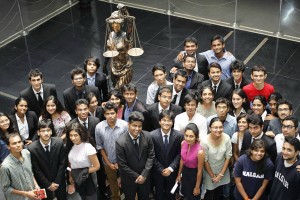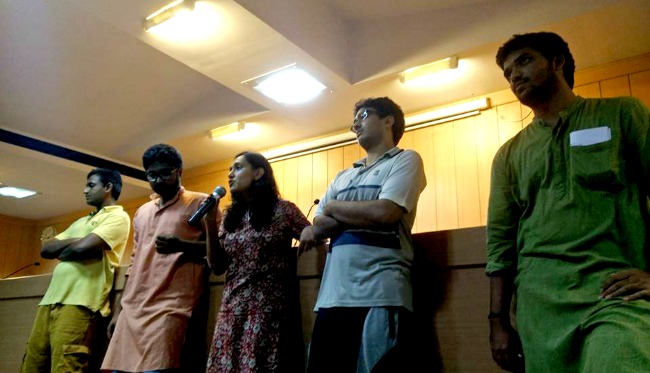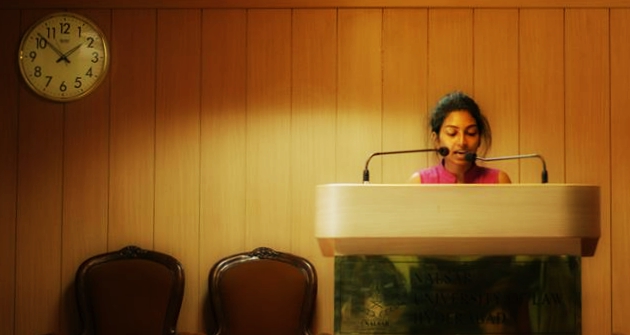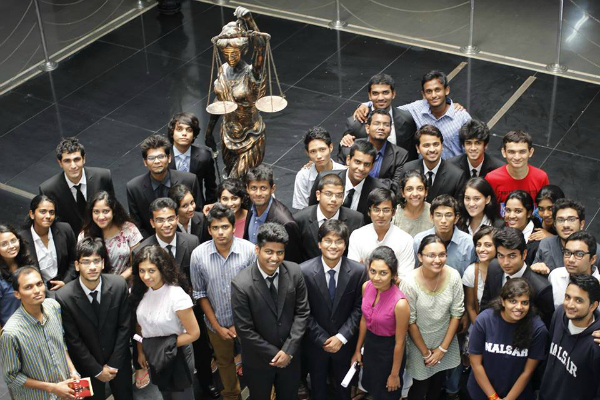 In the early days of my first year at Nalsar, I observed that because the administration tacitly encouraged senior students to handle even grave matters such as ragging, the final year students and especially the members of the Student Bar Council (“SBC”) were considered to be above all rules.
In the early days of my first year at Nalsar, I observed that because the administration tacitly encouraged senior students to handle even grave matters such as ragging, the final year students and especially the members of the Student Bar Council (“SBC”) were considered to be above all rules.
When student self-governance gets co-opted in this manner, absurd hierarchies develop within the student body. Along with this false hierarchy, the absence of grievance redressal mechanisms, the lack of filing requirements for candidates standing elections for these offices, and the students’ inability to directly elect office bearers, added to their disillusionment with the college’s affairs.
The Constitution Review Committee (“CRC”) was established in January 2014 to draft a revised constitution for the SBC that would reinvigorate student self governance at Nalsar through greater participation. It was a nine-member body with one student from the first year, two each from the third and fifth years, and three from the fourth year batch. Its sessions were chaired by the SBC President in a non-voting capacity. Among the members, only three were women and none had ever been an office bearer before.
The body worked by creating five sub-committees, each tasked with re-drafting the SBC constitution’s preamble, representative body structures, social justice mechanisms, financial allocation, and residuary features. The final version of the re-drafted constitution was submitted on May 20, 2014.
At the time that it submitted its report, all office bearers had to first contest at the class-level from any of eight committees – academic, cultural, hostel and campus welfare, literary and debating, mess and hospitality, moot court, sports, and student welfare. In such a system of indirect representation, none of the office bearers were truly representative of the popular will of the student body (as a whole), and therefore lacked the legitimacy to make representations on its behalf. In fact, the office bearers would feel the need to function as agents of their respective batches, because those students had voted for them.
In the CRC’s proposal, the student government would have two tiers – the Executive Council (“EC”) chosen through direct elections and the activity-based committees (“legislature”) chosen by elections within batches. Each committee had to coordinate and manage different spheres of students’ lives.
Every student could be part of the general decision-making body (“GB”) of any two committees. Except for their budget formulation, committees did not have constitutionally mandated functions. Instead, they had to formulate annual plans of action after consulting their GB.

Nalsar’s Student Bar Council for 2014-15
The EC could formulate policies or schemes but implement them only with legislative approval. Each office bearer in the EC also had responsibilities such as being the primary point of contact with the administration (the President), monitoring the finances of the committees (the Treasurer), and detailing the minutes of EC meetings (the Secretary). The Vice President would handle the student government’s ‘public affairs and consultation’.
A new post, that of an ombudsperson called the Student Advocate (“SA”), was also proposed. A fourth year CRC member borrowed the idea from the Public Advocate’s post in the New York City Council. The SA would be a non-voting member with the powers to receive complaints against representatives or take suo motu cognisance of a matter relating to inaction, impropriety, or partiality. Once the SA took up a matter, the erring representative or student committee was duty-bound to prepare a report and table it before the Legislature.
In this scheme, every power of a representative had been created only to enable the discharge of a specified duty, which is linked to rights enforceable by the students. Students have the right to be consulted, the right to be informed and seek information, the right to file individual and collective complaints with authorities and to receive substantiated responses and replies, and the right to initiate impeachment or recall proceedings against representatives (including office bearers).
Most of the CRC’s proposals were never even explored fully. Many students were unwilling to experiment. Some said that they were opposed to direct elections because it would reduce chances for individual batches to win office bearer posts. This was unsurprising because by the second year, Nalsar’s hierarchy becomes an inseparable part of the students’ identities.
Perhaps the proposals were idealistic, but change won eventually. For the SBC elections for 2014-15, the administration promulgated a ‘transit constitution’, which reflected some of the CRC’s proposals but ignored significant ones. Although the CRC’s draft had not proposed reservation as a means of increasing diversity at all, this new constitution created reserved posts for women in the Executive Council. One welcome change was that voting for the President’s election was opened to the entire student body.
Note: I am grateful to Divya Venugopal for her study “The Elephant in the Room: Dealing with Final Year Disengagement”, which proved very helpful in understanding the causes of and methods to tackle student disengagement.
Paaras Pandey is an undergraduate student in his final year at Nalsar.
 Two years ago, Nalsar’s Student Bar Council adopted an accountability policy. It had a formal mechanism of holding student representatives accountable including the appointment of a financial auditor and a grievance redressal officer for each activity-based committee. The auditor had to submit a report on the committee’s functioning at the end of the year.
Two years ago, Nalsar’s Student Bar Council adopted an accountability policy. It had a formal mechanism of holding student representatives accountable including the appointment of a financial auditor and a grievance redressal officer for each activity-based committee. The auditor had to submit a report on the committee’s functioning at the end of the year.





